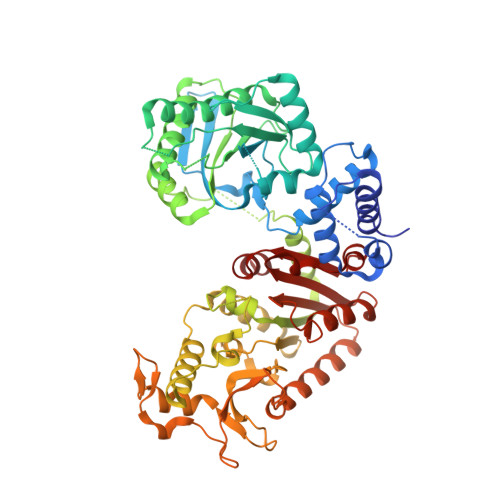Evolutionary and molecular basis of ADP-ribosylation reversal by zinc-dependent macrodomains.
Ariza, A., Liu, Q., Cowieson, N.P., Ahel, I., Filippov, D.V., Rack, J.G.M.(2024) J Biological Chem 300: 107770-107770
- PubMed: 39270823
- DOI: https://doi.org/10.1016/j.jbc.2024.107770
- Primary Citation of Related Structures:
8RSI, 8RSJ, 8RSK, 8RSL, 8RSM, 8RSN - PubMed Abstract:
Dynamic ADP-ribosylation signalling is a crucial pathway that controls fundamental cellular processes, in particular, the response to cellular stresses such as DNA damage, reactive oxygen species and infection. In some pathogenic microbes the response to oxidative stress is controlled by a SirTM/zinc-containing macrodomain (Zn-Macro) pair responsible for establishment and removal of the modification, respectively. Targeting this defence mechanism against the host's innate immune response may lead to novel approaches to support the fight against emerging antimicrobial resistance. Earlier studies suggested that Zn-Macros play a key role in the activation of this defence. Therefore, we used phylogenetic, biochemical, and structural approaches to elucidate the functional properties of these enzymes. Using the substrate mimetic asparagine-ADP-ribose as well as the ADP-ribose product, we characterise the catalytic role of the zinc ion in the removal of the ADP-ribosyl modification. Furthermore, we determined structural properties that contribute to substrate selectivity within the different Zn-Macro branches. Together, our data not only give new insights into the Zn-Macro family but also highlight their distinct features that may be exploited for the development of future therapies.
- School of Biosciences, University of Sheffield, Alfred Denny Building, Western Bank, Sheffield, S10 2TN, UK; Sir William Dunn School of Pathology, University of Oxford, South Parks Road, Oxford, OX1 3RE, UK.
Organizational Affiliation:




















